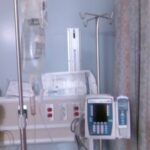The gallbladder is a small organ that rests on the liver. A nonessential organ, the gallbladder’s central function is the storage of bile, which is a substance used in digestion. Frequently, however tiny this organ may be, it can become the cause of a great deal of pain. Gallbladder diseases can cause nausea, digestive complications, and sudden abdominal pain which can linger for hours.
In the majority of cases of gallbladder pain, the root cause is gallstones. According to the National Institutes of Health, gallstones are solid deposits of either cholesterol or pigment. There are a few uncontrollable factors that increase the risk of developing gallstones: age (older people face a greater risk), gender (women develop gallstones twice as often as men), and a family history of gallstones.
However, certain factors in the development of gallstones are manageable. There are a few steps that a person can take in reducing the risk of developing gallstones. Both obesity and under-eating or rapid weight loss can contribute to the development of gallstones. As such, one of the simplest ways to reduce the risk of gallstones is to maintain a healthy balanced diet.
Healthy eating can play a major role in preventing and reducing gallbladder pain. Highly fatty or greasy foods can frequently trigger gallbladder pain shortly after eating. Also, since most gallstones are cholesterol-based, diets that are low in cholesterol can work to prevent them. It can be very helpful to limit the intake of foods that tend to be high in saturated fat such as red meat, dairy products, and junk food, which tend to increase the body’s blood cholesterol levels. Ideally, the recommended daily intake of fat should come from unsaturated fats in healthy sources like olive oil, nuts, and certain varieties of fish.
In addition to a balanced diet, getting regular exercise can help to control cholesterol levels and the risk of gallstones. The Penn State University Medical Center suggests avoiding excessive alcohol consumption, as this can aid in the development of gallstones or in aggravating their symptoms.
For gallstones that cause attacks or are otherwise significant in size, there are a few medical treatment options. The gallbladder is a non-vital part of the body and the most common treatment for gallstones is the removal of the gallbladder. Gallbladder removal surgery is one of the most frequently performed procedures; today, it is usually a minor laparoscopic procedure involving small incisions. Nonsurgical treatments for gallstones have also developed. These generally involve taking medication which can dissolve the stones over time.
Gallbladder pain can be significant and it is usually the result of gallstones which often require treatment. If you ever believe you have gallstones or if you have any questions about them, consult your doctor.
References:
Gallstones. National Institute of Diabetes and Digestive and Kidney Diseases. National Institutes of Health.
Gallstones. Penn State Milton S. Hershey Medical Center. Penn State University.



